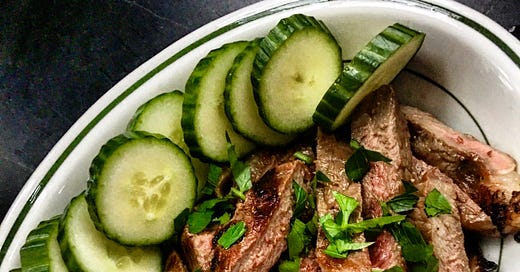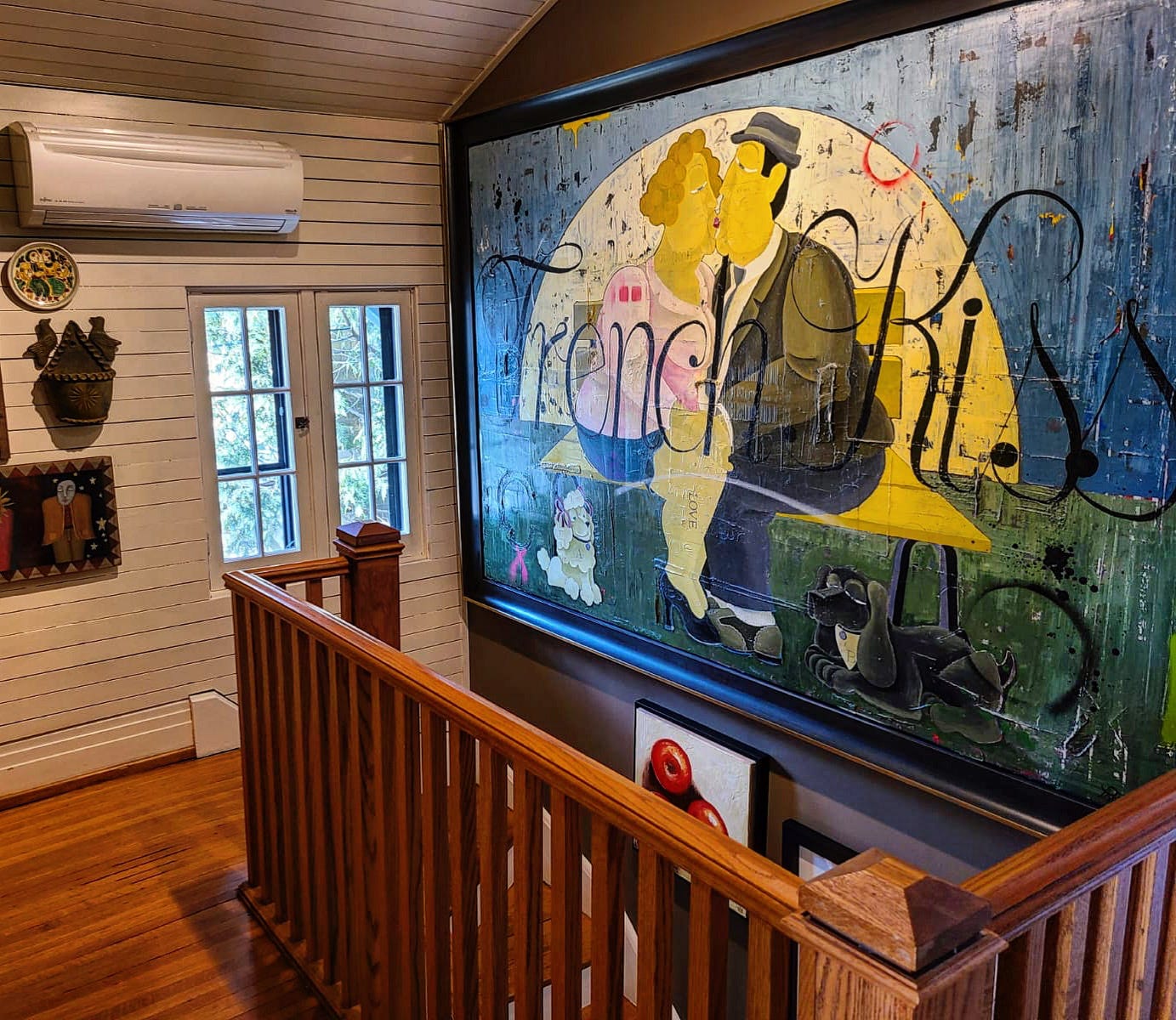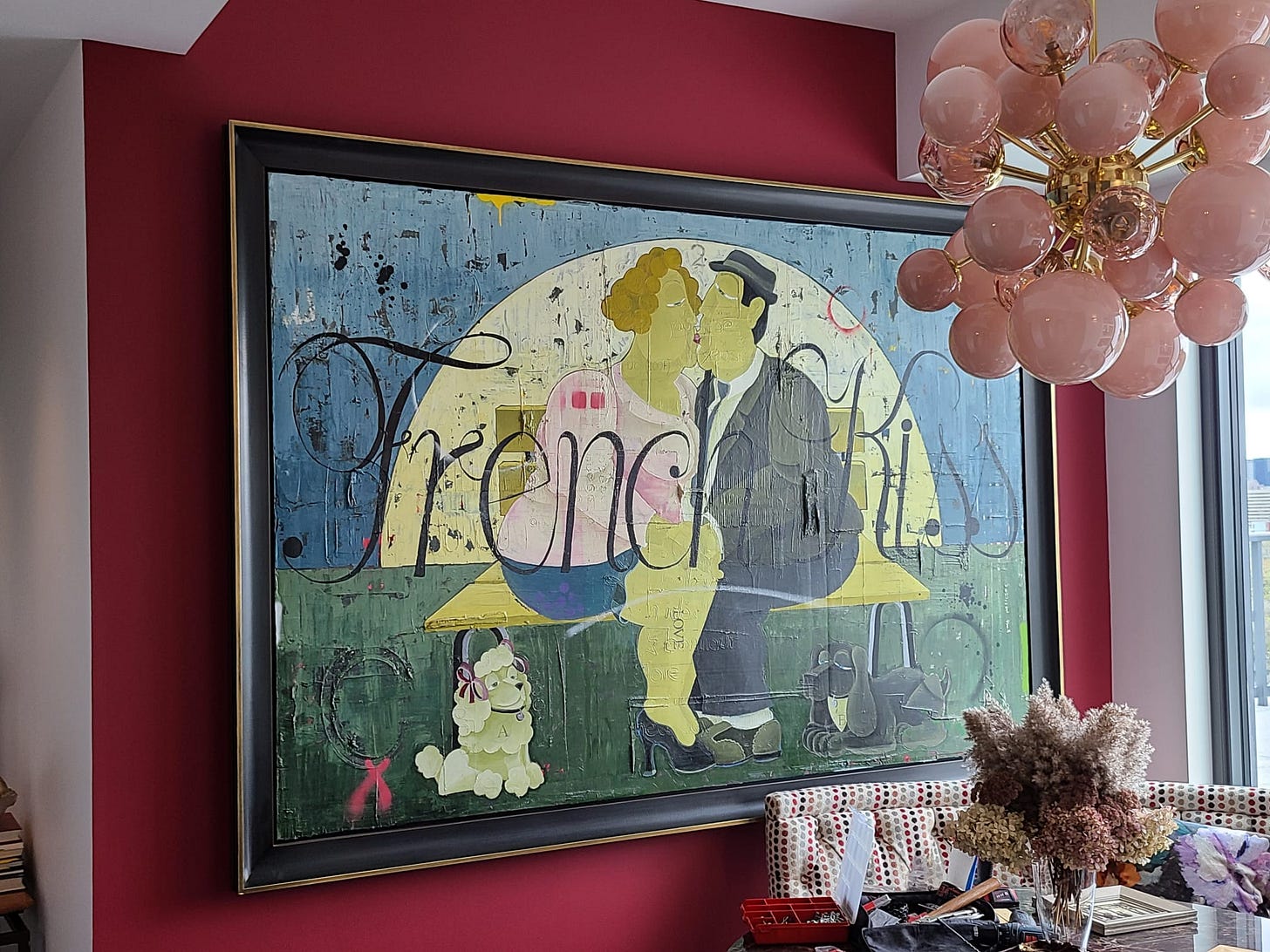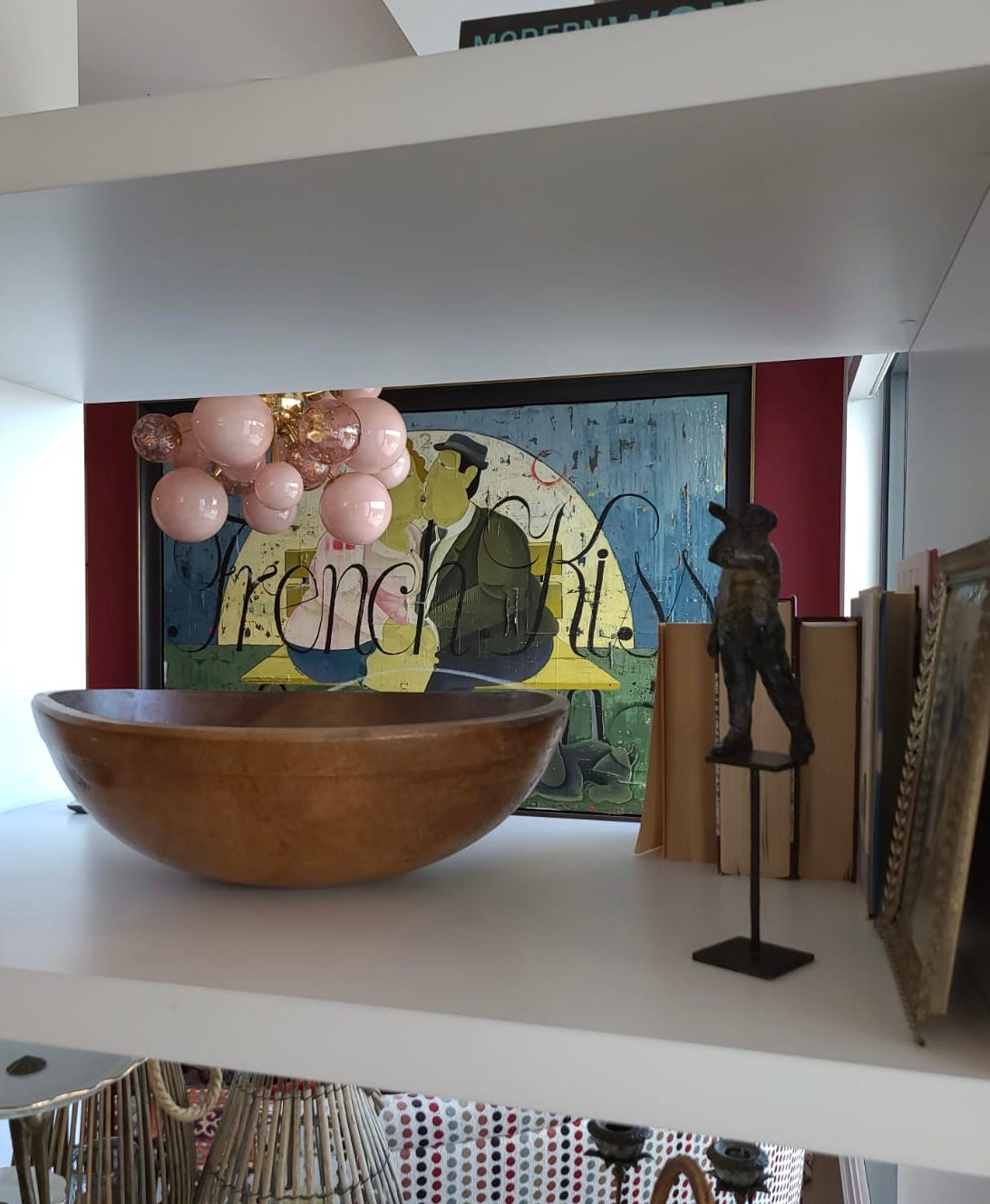I will never be a minimalist.
As much as I love the peace and calm that clean spaces bestow, being surrounded by the accumulation of a life brings me a unique sense of joy. I like to think that it goes beyond the impulse of acquisition. My love of objects of all sorts is rooted in the stories they tell, the memories they conjure, a moment in time they recall.
And nothing makes me happier than the art we have filled our home with over the last thirty years.
But here’s the interesting thing about art. Its meaning and impact shifts dramatically simply with the space it occupies, with how close or far we stand from it. As we move art around us, we not only see it with fresh eyes, we also understand it in different ways.
Perspective changes everything
Singular forms change when unified, defining themselves by the spaces of proximity, the spaces in between.
—Jim Edward Russell, artist
I’ve been thinking a lot about this after seeing Jim Russell’s Thesis Exhibition recently. Centred around the idea of the poetry of proximity, what he calls “the mysterious connective forces between things,” he describes his research as the examination of the relationships that are formed consciously and unconsciously within an organizational system, in this case, the simple yet profound grid.
Seen close up, his work is a series of seemingly randomized dots forming some sort of pattern. It is only in stepping away from the work that the whole emerges. Those colourful dots become the eye in a face in repose and reflection.
There is much more to Jim’s research than this, ideas that are nuanced, considered and thought-provoking. They’ve been especially playing in my mind as we’ve done our own shift of perspective. This week we moved a houseful of art to our new place, and the notion of how perspective changes our relationship with art has become clearer.
Take one of our favourite pieces, an oversized painting from Québécois artist Rock Therrien. With its massive proportions, the only place it could fit in our house was at the top of our stairwell. Wedged there, with a bit of natural light and a vantage point of barely more than six feet, the painting could be seen but its story as a whole lost something in translation.
In its new home, French Kiss is a visual delight, welcoming us as we walk in the door, inviting both closer inspection, while we can also get a mischievous glimpse through the shelves from other rooms. We’ve been able to create lovely “galleries” throughout our space, introducing dear friends to one another that previously lived floors apart, through the incredible eye and talent of Andrej Jenik, our magical art installer, and his sidekick Henry.
We’ve fallen in love all over again with the street art we bought in Barcelona and Buenos Aires, their value measured, not in the fame of the artist, but in the joy we felt at the moment of being there. We’ve been marvelling at our talented artist friends, whose work grace our walls and remind us of the immeasurable creativity that lives in us all.
Most of all, we’ve been reminded that change sparks regenerative growth, that the space between is rich with meaning, that I will never stop wanting to surround myself with the beauty of art, even when the wall space runs out.
Pan-seared marinated flank steak
Jacques Pepin, Essential Pepin
serves 4
There’s an art to making a good steak. Seared too long, it might be tough on the outside, still uncomfortably red inside. The magic moment of medium rare can be elusive. For some, reverse searing has become the norm for cuts of meat that are Flintstone-sized. For others, the barbecue is king, the higher the heat, the better.
Amid all the fuss, I turn to Jacques Pepin’s simple and elegant way with a flank steak. Not the most expensive cut of meat, in this incarnation, flank steak benefits from a turn in a five-ingredient marinade, quickly seared and finished in a low heat oven. The meat can rest for up to 40 minutes in the warm oven, giving you plenty of time to make a leafy green salad or even frites if the mood strikes you. I like to present it with fresh herbs and crisp cucumber.
When I begin to cook in my new kitchen, I’ll also enjoy seeing Chef Pepin’s wonderful art, enjoying a new home in my living room gallery. Click here to see more of Chef Pepin’s whimsical art.
Ingredients
2 tablespoon honey
4 tablespoons dark soy sauce
2 tablespoons finely chopped garlic
1 teaspoon ground coriander
¼ teaspoon cayenne pepper or piment d’Espelette
1 flank steak (about 1¼ pounds and ¾ inch thick, trimmed of all surface fat
Mix all the ingredients together in an ovenproof gratin dish large enough to hold the flank steak. Place the steak in the dish, turning it to coat all sides with the marinade. Cover and marinate in the refrigerator for at least 1 hour or up to 24 hours.
Heat the oven to 160F.
Remove the steak from the marinade and set aside. Pour the marinade into a small saucepan and bring to a boil. Rinse and dry the gratin dish and put the marinade in it. Set aside.
Heat a grill, heavy aluminum or cast-iron skillet or saucepan for at least 5 minutes over high heat, until it is very hot. Place the steak on the hot grill or skillet, cook over high heat for 1½ minutes, then turn and cook for 1½ minutes on the second side to sear the meat and give it a well-browned exterior.
Return the meat to the gratin dish, turning once to coat with the marinade, and place it, uncovered, in the warm oven to continue cooking in its own heat for at least 10 minutes (you can hold the steak in the oven for up to 40 minutes).
To serve, cut the steak on the diagonal into thin slices, and serve with the marinade on very hot plates.











Lovely piece and your art looks beautiful in your new home!
Can’t wait to see your new digs. I love the wall of small frames!
Thanks for another classic recipe. A must for the Summer.